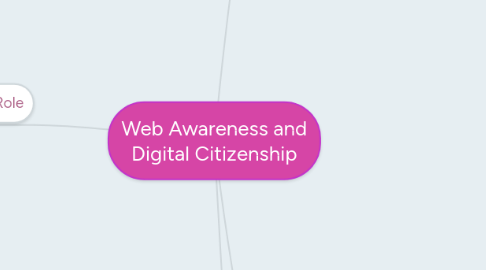
1. Teachers Role
1.1. Model
1.2. Teach ethical use
1.3. Documenting sources
2. Digital Citizenship
2.1. Respect
2.1.1. Yourself
2.1.2. Intellectual Property
2.1.3. Others
2.2. Netiquette
2.2.1. Digital ettiquette
2.2.1.1. Rules
2.2.1.2. Ethical Philosophy
2.2.1.3. Golden Rule
2.2.1.4. Courtesy
2.2.1.5. Social Code
2.2.2. Flaming
2.2.2.1. Arugments
2.2.2.2. Insults
2.2.2.3. Flamewars
2.2.3. Trolls
2.2.3.1. Begin arguments
2.2.3.2. Are Anonymous
2.2.3.2.1. Secret Identity
2.2.3.3. Forget rules
2.2.4. Clear communication
2.2.4.1. Emoticons
2.2.4.2. Capitals
2.2.4.3. Punctuation
2.2.4.4. Abreviations
2.2.4.5. Humour
2.2.4.6. Re-read
2.2.4.7. Permission
2.3. Literacy
2.3.1. Media
2.3.2. Digital
2.4. Navigate
2.4.1. Information Superhighway
2.4.1.1. Yahoo
2.4.1.2. Google
2.4.1.3. Youtube
2.4.1.4. Twitter
2.4.1.5. Blogs
2.4.1.6. Facebook
2.4.1.7. Skype
2.5. Access
2.5.1. Connection
2.5.2. Collaboration
2.5.3. Learning
2.5.4. Community
2.5.5. Information
2.6. Teaches
2.6.1. Privacy
2.6.2. Digital Footprint
2.6.3. Credibility
2.6.4. Culture
2.6.5. Online Ethics
2.6.6. Cyberbullying
2.6.6.1. How to Handle
2.6.7. Online Identity
2.6.8. Ownership
3. Web Awareness
3.1. Internet Safety
3.1.1. Keep kids safe
3.1.1.1. Stop using internet
3.1.1.2. Filtering systems
3.1.1.3. Anything goes approach
3.1.2. Teaching it
3.1.2.1. Investigate
3.1.2.2. Analogies
3.1.2.3. Students as teachers
3.1.2.4. Third Party Resources
3.1.2.4.1. Cybersmart
3.2. Internet Allows
3.2.1. 24/7
3.2.1.1. Sharing
3.2.1.2. Communication
3.2.1.3. Collaboration
3.2.1.4. Share
3.3. Media Literacy
3.3.1. Participation
3.3.2. Naviagte
3.3.3. Think deeply
3.3.4. Parents/Students/Teachers
3.3.5. Basic Skills
3.3.6. Privacy settings
3.4. Ethics
3.4.1. Ethical core
3.4.2. Respect
3.4.3. Dignity
3.5. Online footprint
3.6. Rapid Change
3.6.1. New
3.6.1.1. Rules
3.6.1.2. Programs
3.6.1.3. Technology
3.7. Teachers
3.7.1. "In loco parentis"
3.7.1.1. Unofficial Guardian
4. Threats to Students
4.1. Unhealthy sites
4.2. personal information
4.3. Platform
4.3.1. Selling
4.3.1.1. Commercial Products
4.4. Facts vs Folly
4.4.1. Wesites
4.4.2. Emails
4.5. Intellectual poperty
4.6. Marketing
4.7. Privacy
4.8. Copyright
4.8.1. Intellectual Property
4.8.2. Copying and Pasting
4.8.3. Give Credit
